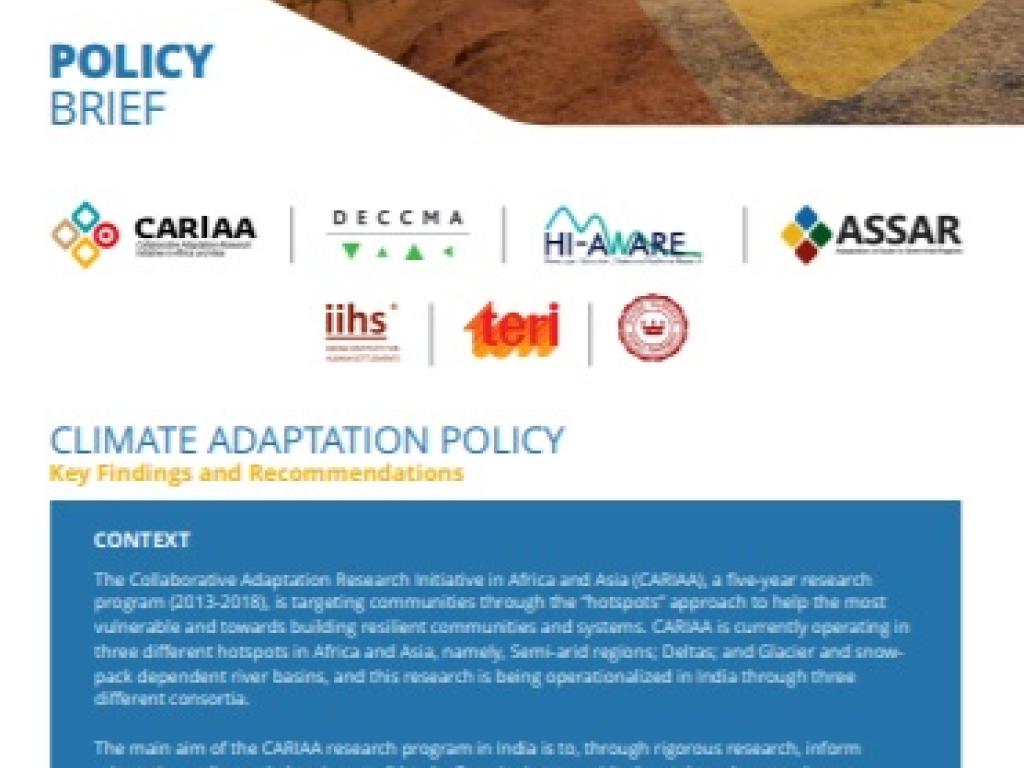Adaptation in semi-arid areas of India

Authors: Amir Bazaz | Prathigna Poonacha | Maitreyi Koduganti | Suruchi Bhadwal | Ganesh Gorti | Tuhin Ghosh | Ramkumar Bendapudi | Dipak Zade
South Asia is a global 'climate change hotspot' with data indicating that the region experiences slow-onset and rapid climatic changes in various forms. A large majority of the global poor resides in this region, which also has huge gaps in climate adaptive capacities. India is the largest country in South Asia, both in terms of geographical space and demographics. India and its sub-regions face a dynamic climatic and non-climatic risk profile. These climatic and non-climatic risks, separately and in interaction, make people and systems highly vulnerable. Key vulnerabilities and risks are found to be deeply embedded within the existing social and biophysical conditions of people and socio-ecological systems, which emerge as a critical barrier to effective, widespread and sustained adaptation.
The Intergovernmental Panel on Climate Change (IPCC), through its most recent Assessment Report 5, has emphasised huge impacts of climate change, and has recognised adaptation as central to climate change policy, partly due to large-scale differential impacts experienced by vulnerable populations. Adaptation planning has evolved and departed from its narrow understanding of biophysical-based vulnerability to include the social dimensions of vulnerability. The emerging climate policy discourse of recent times emphasises mainstreaming climate change adaptation in development and thus argues for including climate risk and adaptation as key elements of the development process. In India, adaptation has been rooted in the development agenda and incorporated into various instruments like the National Adaptation Programmes of Action (NAPAs), the National Action Plan on Climate Change (NAPCC) and the State Action Plan on Climate Change (SAPCC).
This briefing note discusses various adaptation strategies and prospects across three important 'hotspots' in India. This work is part of the Adaptation at Scale in Semi-Arid Regions (ASSAR) project, a consortium within the Collaborative Adaptation Research Initiative in Africa and Asia (CARIAA). In the context of the existing global development (SDGs) and climate (Paris Agreement) frameworks, it becomes imperative to address local, context-speciï¬c adaptation needs and thereby build both generic and climate specific capacities of vulnerable people and systems. This would need to be managed within the concerns, imperatives and aspiration of systems and people but would be necessary to improve prospects for achieving the SDGs and Paris climate goals.
